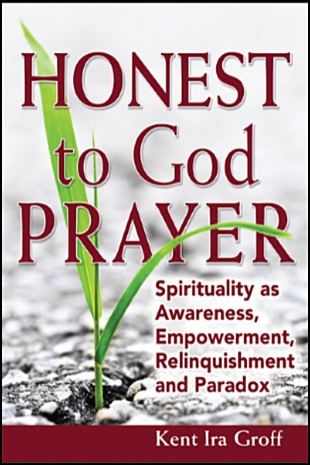Living Awake to the Whole Self: Multiple Intelligences and Soul
"The multiple intelligences approach to learning, pioneered and developed by Harvard educator Howard Gardner over three decades, offers practical, creative frames for noticing, offering, and listening in all of life. Particular modes of learning are highly developed in a person, in others less, yet everyone has some aptitude in each. I aim to show how these nine frames of mind, as Gardner calls them, can reframe any profane or profound experience as an occasion for prayer and spiritual awakening.
"Here I offer a playful, prayerful perspective on these nine ways of tending the soul's gifts and struggles, always with an eye to a sense of invitation.
"1. Linguistic/verbal: Prayer articulates the soul's yearnings by playing with words in sacred texts with stories and poetry. As a child can't survive in isolation, so a spiritual seeker needs relationships to listen and learn the language of love.
"2. Logical/mathematical: Technological tools connect kindred spirits via the Internet; theological ideas make sense of crazy experiences. The Bible and Jewish kabbalistic spirituality play with sacred numbers, like seven, to signify wholeness.
"3. Spatial/visual: Our souls resound with awe in temples and cathedrals, with intimacy in house churches. We play and pray by exploring geography, cultural exchanges, holy places, labyrinths — and inner spaces of imagination (like Narnia).
"4. Musical/rhythmic: 'One who sings prays twice,' said Augustine. Drums, chants, strings, and poetry's beat echo the soul's sorrow and joys; jazz makes the blues beautiful; African American spirituals unite personal and political struggles.
"5. Kinesthetic/bodily: The Spirit inhabits our breathing from our borning cry to our wordless sighs; gestures, used to direct players in a symphony or a ball game, can express the soul's prayers in bowing, kneeling, dancing, or walking a labyrinth.
"6. Interpersonal: Extroverts tend to encounter the Sacred in community, introverts in small groups or one-on-one; both experience the Holy in playful and genuine relationships, as a surprise line of a conversation can be a prayer or an epiphany.
"7. Intrapersonal: Prayerful contemplation and playful reflection thrive in solitude, which is sorely neglected in our technological society; silence nurtures an introvert's joy and preserves an extrovert's sanity; journaling dream associations unlocks prayers.
"8. Naturalist: Our primal yearnings resonate with natural environments, playfully and prayerfully responding to the Sacred in awe and beauty, in patterns of devastation and renewal in nature, human nature, and nations.
"9. Existentialist: Honest to God prayer can play and pray with the 'why' questions of an Einstein, a three-year-old, or a philosopher: Why are we here? What's it all about? How shall we then live?
"These nine perspectives integrate our primal knowing with our modern knowledge for a genuine holistic approach to prayer. For nearly four centuries, Rene Descartes's maxim 'I think, therefore I am' skewed modern Western culture toward logical and technological intelligence. But if you examine only what you 'think' about God, you can end up feeling like a spiritual flunky. Actually you may 'know' the Holy in your experience, your gut, your heart — your primal brain. Today's spiritual quest is to link our primal yearnings with our modern learnings, and these nine frames of mind act as links in a transformative chain reaction.
"Some ask, where are the spiritual and emotional intelligences? I was with Gardner for a weeklong seminar when he was still deciding what to name the ninth intelligence. During a break, I said, 'I hope you never call it a spiritual or religious intelligence.' Why would I say that when I'm a minister and spiritual writer? Because, he affirmed, spiritual and emotional dimensions are woven throughout all nine, and to create a separate category would split the soul from the essence of life.
"The ancient Greek Archimedes sprang naked out of his bath when a new scientific truth struck him, shouting, Eureka! Eureka! — 'I've found it! I've found it!' Singer-songwriter John Denver sang about nature's 'Rocky Mountain High.' French mathematician and philosopher Blaise Pascal encountered the mystic Christ via his mathematical calculations. Brother Lawrence was converted by seeing a barren tree in winter. Psalms are full of naturalist wonders and kinesthetic spiritual gestures: walking, climbing, bowing, kneeling, clapping, and lifting hands. And the existentialist questions of your life create the seedbed for the Spirit. Prayer embodies spirituality in every sphere of life — emotional, mental, and physical.
"Creative stories also participate in facets of all nine modes: witness stories told as operas, musicals, ballads, dances, and dramas. A Hasidic story tells of a rebbe, a respected Jewish teacher, who was crippled and bedfast for years. In struggling to light the first Hanukkah candle, he began to tell how his grandfather used to sing and dance. As the old man was telling it he hobbled on his twisted feet and began singing and dancing.
"These nine lenses create a practical, observable template to renew holistic spirituality in language, reason, imagination, body, music, relationships, solitude, nature, and questions."
